“Design is not just what it looks like and feels like. Design is how it works.” — Steve Jobs
Morphogenetic Design
Group Presentation
The first part of this final project was to study and present our research on a living organism, its structural qualities and how those qualities help shape the organism’s role in nature / its environment. My group comprising of Ninet, Hin Kei and I decided to work on shark’s scales and in particular, those of the Requiem, Hammerhead and Nurse sharks.
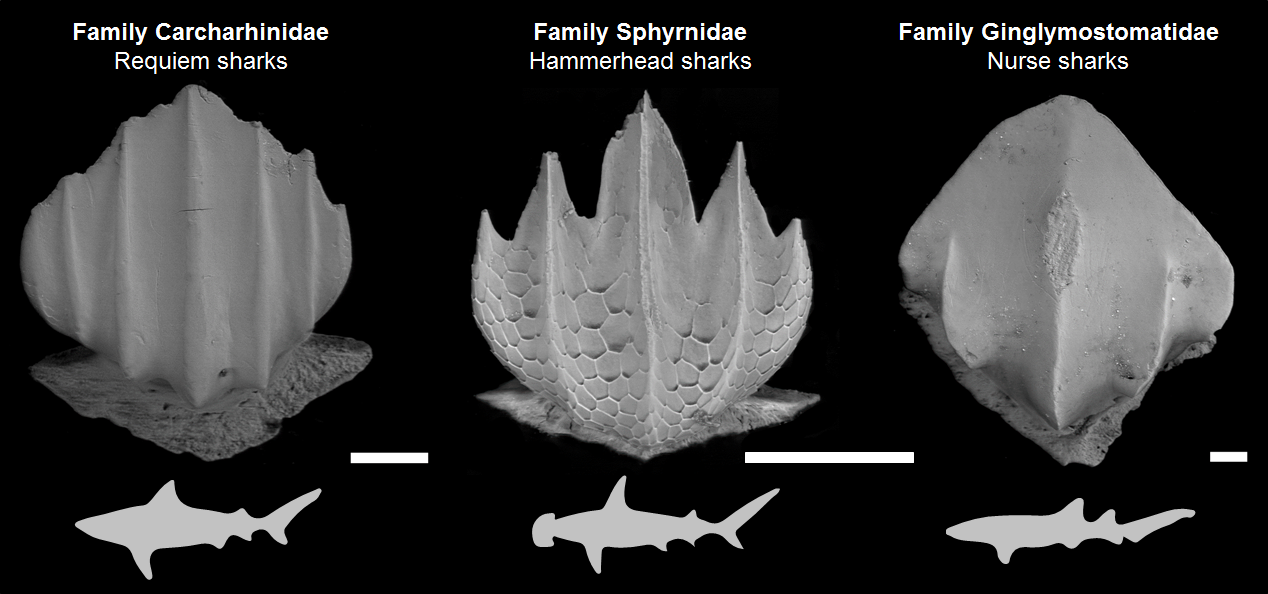
We explored the arrangement of shark scales in relation to their dietary habits, habitat and each of their positions in the food chain. Taller ridges in the shark’s scales help to increase its aerodynamic speed in the water so they are able to catch their prey easily. For the nurse sharks I would be working on, they are noted to have a rather filed down ridge as they spend most of their time on seabeds in shallow waters and do not require such speed to hunt.
Sketches & Round 1 Prototypes
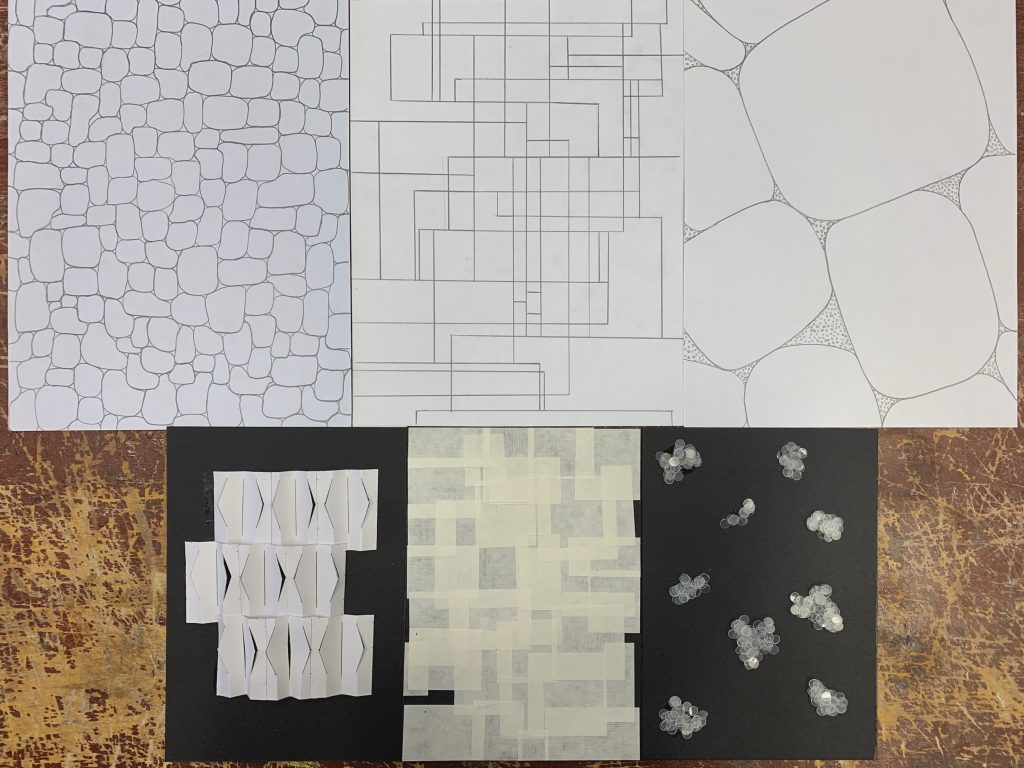
After doing our research, the group split and each of us were tasked to create abstract sketches and initial prototypes for the planes. Studying the scale in detail and how I could possibly render each unit as part of a light filter, I explored various patterns and textures from 3 designs I created.
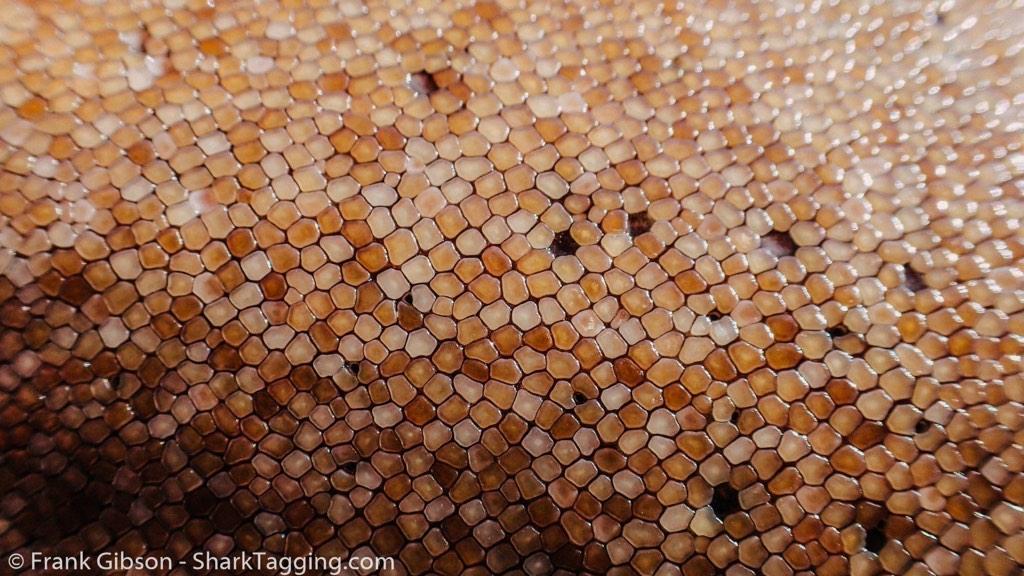
The first piece on the left is a creation from the image seen above. The scales as seen from close but not microscopic distance appears to be like mosaic tiles that are fitted into a jigsaw sort of shape. Knowing how a single nurse shark scale appears, I worked the features such as ridges and folds into this tile like jigsaw to create a complex organic surface structure. Each unit has ridges that open in an angular shape and let light through. The sides also conjoin with the other units to create a curtain like design that I was contemplating on creating.
Feedback:
– I will have to express the ridges of the shark’s scales in one way or another to make the piece a 3 dimensional surface and not too plain.
– I will need to be able to control geometric repetition for it to be stronger and orderly.
– Even when overlapping, the quality has to be there. Take note that the model should be 3D and not 2D
Round 2 Prototypes
Type of Light Filter Chosen: Lantern
For this round of prototypes, I experimented and tried to create a lantern from the smaller pieces of scales.
Building from Round 1’s feedback, I enhanced the dynamism of each scale to have ridges and flaps that are more angular than before. I also decided to add in the the circular spots around each shark scale as seen by the glued plastic circles in the centre of each scale.

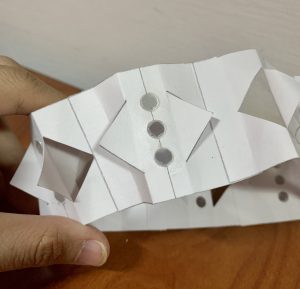
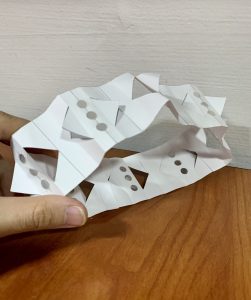
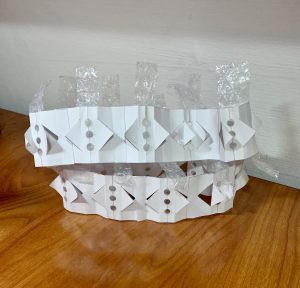
Round 3 & final Light Filter
Type of Light Filter Chosen: Curtain Tapestry
The material for this last round has changed to art card as OSH suggested due to its ability to safely and firmly lodge itself when slits are cut. I came to realise that if I wanted the shark scales to be more so dynamic and hold up in the assembly, I will have to remove the plastic plates down the centre. It was hindering the folds and did not stick well so I removed it completely to leave the punched out portions of the art card.
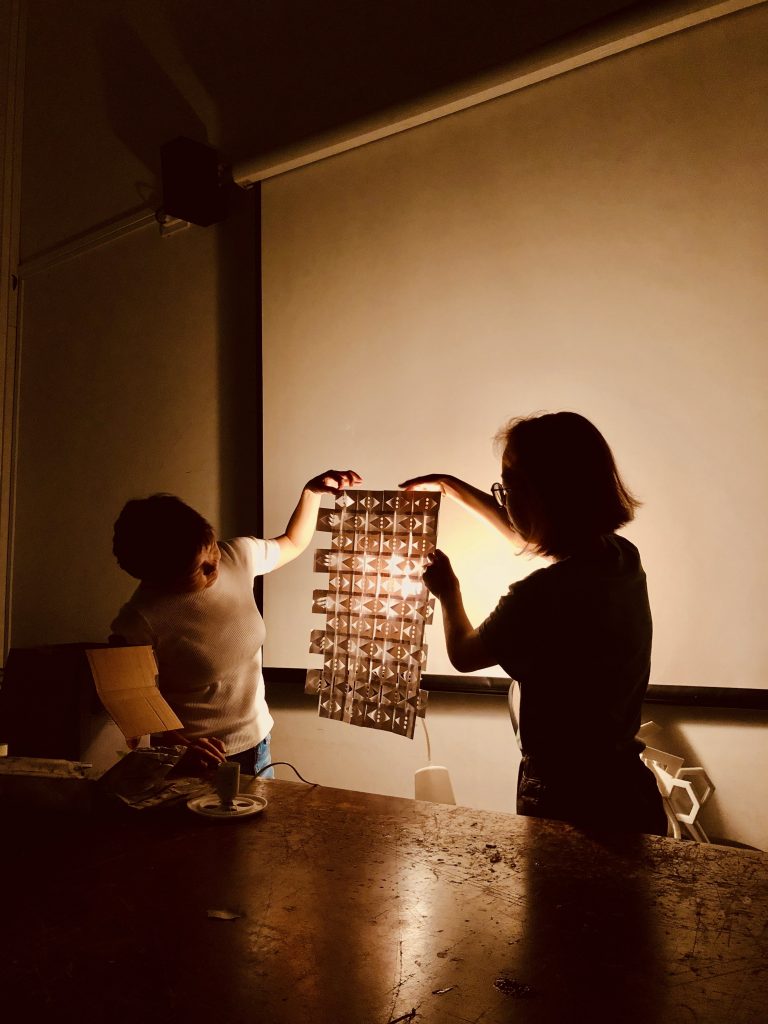

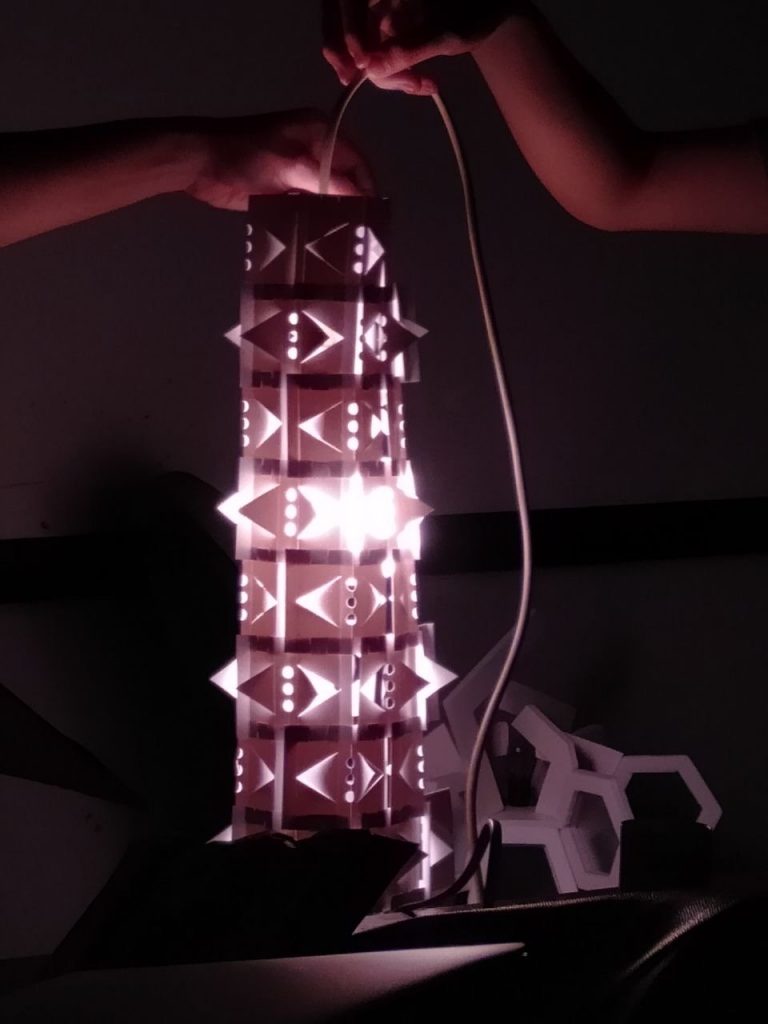
Osh mentioned that the light filter could also be made into a tall cylindrical lantern if not a tapestry and I think it looks beautiful both ways (see above). I am extremely happy at how the light filter turned out. The light was hitting at all the right corners of the light filter and created beautiful shadows onto the ridges of each scale.
Credits:
-
- https://saveourseas.com/update/shark-skin-sleuthing/
- https://twitter.com/whysharksmatter/status/531928154672070656
- https://dougperrine.photoshelter.com/gallery-image/G0000BMbkU35m544/I0000wPKGeA1Os4g/21
Thank You 🙂